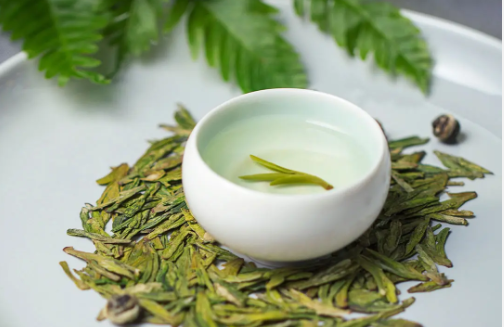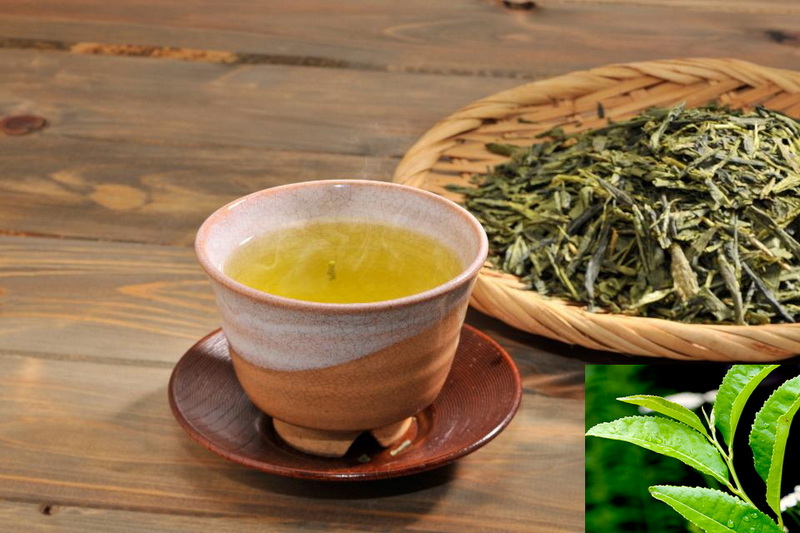Content Menu
● What is Green Tea Extract?
● Benefits of Green Tea Extract
● How to Make Green Tea Extract at Home
>> Ingredients and Equipment Needed:
>> Step 1: Select and Prepare the Green Tea Leaves
>> Step 2: Heat the Water
>> Step 3: Steep the Tea
>> Step 4: Strain and Repeat
>> Step 5: Combine and Reduce
>> Step 6: Cool and Store
● Alternative Extraction Methods
>> Ethanol Extraction
>> Supercritical CO2 Extraction
● Tips for Using Green Tea Extract
● Potential Side Effects and Precautions
● Conclusion
● Frequently Asked Questions (FAQ)
>> 1. How long does homemade green tea extract last?
>> 2. Can I use green tea bags instead of loose leaves to make the extract?
>> 3. Is green tea extract safe for everyone to consume?
>> 4. How much green tea extract should I consume daily?
>> 5. Can green tea extract help with weight loss?
● Citations:
Green tea extract is a concentrated form of green tea that contains powerful antioxidants and beneficial compounds. It has gained popularity due to its potential health benefits, including weight management, improved brain function, and reduced risk of certain diseases. In this comprehensive guide, we'll explore the process of making green tea extract at home, its benefits, and important considerations.

What is Green Tea Extract?
Green tea extract is derived from the leaves of the Camellia sinensis plant, the same plant used to make various types of tea. The extract contains concentrated forms of the beneficial compounds found in green tea, particularly catechins, with epigallocatechin gallate (EGCG) being the most abundant and well-studied[1].
Benefits of Green Tea Extract
Before we delve into the extraction process, let's briefly discuss some of the potential benefits of green tea extract:
1. Rich in antioxidants: Green tea extract is high in polyphenol antioxidants, which can help reduce oxidative stress in the body[1].
2. May promote heart health: Studies have shown that green tea extract can help lower blood pressure and improve blood fat levels, potentially reducing the risk of heart disease[1].
3. Supports brain function: The antioxidants in green tea extract may protect brain cells from oxidative stress and improve memory and cognitive function[1].
4. Aids in weight management: Green tea extract has been associated with increased fat burning and improved metabolism, which may contribute to weight loss[1].
5. Potential cancer-fighting properties: Some research suggests that the antioxidants in green tea extract may help prevent the growth and spread of certain types of cancer cells[4].
How to Make Green Tea Extract at Home
Making green tea extract at home is a simple process that allows you to control the quality and concentration of the final product. Here's a step-by-step guide:
Ingredients and Equipment Needed:
- High-quality green tea leaves
- Distilled water
- Large pot or kettle
- Cheesecloth or fine-mesh strainer
- Glass jars for storage
Step 1: Select and Prepare the Green Tea Leaves
Choose high-quality green tea leaves, preferably organic and from a reputable source. The quality of the leaves will directly impact the potency of your extract. Measure out about 1 cup of loose green tea leaves for every 4 cups of water you plan to use.
Step 2: Heat the Water
In a large pot or kettle, heat distilled water to about 160-170°F (71-77°C). This temperature is ideal for extracting the beneficial compounds without causing bitterness[3].
Step 3: Steep the Tea
Add the green tea leaves to the hot water and let them steep for about 3-5 minutes. This initial steeping helps to release the water-soluble compounds.
Step 4: Strain and Repeat
Strain the liquid through a cheesecloth or fine-mesh strainer into a clean container. Return the leaves to the pot and add fresh hot water. Repeat the steeping process 2-3 more times to extract as many compounds as possible.
Step 5: Combine and Reduce
Combine all the strained liquid in a large pot and simmer over low heat. Allow the liquid to reduce by about half, concentrating the extract. This process may take several hours.
Step 6: Cool and Store
Once the extract has reduced and cooled to room temperature, transfer it to clean glass jars. Store the extract in the refrigerator for up to two weeks.

Alternative Extraction Methods
While the water-based method described above is the most common for home use, there are other extraction techniques used in commercial production:
Ethanol Extraction
This method uses ethanol as a solvent to extract a wider range of compounds from the tea leaves. It's more efficient at extracting certain catechins but requires specialized equipment and is not suitable for home use[6].
Supercritical CO2 Extraction
This advanced technique uses carbon dioxide in a supercritical state to extract compounds from the tea leaves. It's highly efficient and produces a pure extract but requires specialized industrial equipment[6].
Tips for Using Green Tea Extract
1. Start with small doses: Begin with a low dose and gradually increase it to assess your tolerance.
2. Take with food: Consuming green tea extract with food can help reduce the risk of side effects[2].
3. Avoid high doses: Excessive consumption of green tea extract can lead to liver problems and other side effects[5].
4. Consult a healthcare professional: If you have any pre-existing health conditions or are taking medications, consult your doctor before using green tea extract.
Potential Side Effects and Precautions
While green tea extract is generally considered safe for most people, it's important to be aware of potential side effects:
1. Caffeine sensitivity: Green tea extract contains caffeine, which may cause insomnia, nervousness, and increased heart rate in sensitive individuals[2].
2. Liver concerns: High doses of green tea extract have been associated with liver problems in some cases[5].
3. Iron absorption: Green tea extract may interfere with iron absorption, so it's best to consume it between meals[4].
4. Medication interactions: Green tea extract can interact with certain medications, including blood thinners and some antibiotics[7].
Conclusion
Making green tea extract at home is a straightforward process that allows you to harness the potential health benefits of this powerful plant. By following the steps outlined in this guide, you can create a concentrated form of green tea rich in antioxidants and beneficial compounds. Remember to use high-quality tea leaves and consume the extract in moderation to maximize its benefits while minimizing potential risks.
As with any supplement, it's essential to consult with a healthcare professional before incorporating green tea extract into your routine, especially if you have pre-existing health conditions or are taking medications. By doing so, you can safely enjoy the potential health-promoting properties of green tea extract as part of a balanced lifestyle.

Frequently Asked Questions (FAQ)
1. How long does homemade green tea extract last?
Homemade green tea extract, when stored properly in the refrigerator, can last up to two weeks. For longer storage, you can freeze the extract in ice cube trays and thaw as needed.
2. Can I use green tea bags instead of loose leaves to make the extract?
While it's possible to use tea bags, loose leaves are generally preferred for making extract. Loose leaves tend to be of higher quality and allow for better extraction of beneficial compounds.
3. Is green tea extract safe for everyone to consume?
Green tea extract is generally safe for most people when consumed in moderation. However, individuals with liver problems, caffeine sensitivity, or those taking certain medications should consult a healthcare professional before using green tea extract.
4. How much green tea extract should I consume daily?
The appropriate dosage can vary depending on the concentration of the extract and individual factors. It's best to start with a low dose (e.g., equivalent to 1-2 cups of green tea) and gradually increase if needed, always staying within recommended limits.
5. Can green tea extract help with weight loss?
Some studies suggest that green tea extract may aid in weight loss by boosting metabolism and increasing fat oxidation. However, it should not be considered a magic solution and is most effective when combined with a healthy diet and regular exercise.
Citations:
[1] https://www.healthline.com/nutrition/10-benefits-of-green-tea-extract
[2] http://www.greenskybio.com/blog5/best-answers-to-7-key-questions-about-green-tea-extract.html
[3] https://patents.google.com/patent/US7910147B2/en
[4] https://pmc.ncbi.nlm.nih.gov/articles/PMC6412948/
[5] https://johnshopkinshealthcare.staywellsolutionsonline.com/19,GreenTeaExtract
[6] https://www.mdpi.com/2297-8739/10/2/121
[7] https://www.urmc.rochester.edu/encyclopedia/content?contenttypeid=19&contentid=greenteaextract
[8] https://www.mountsinai.org/health-library/herb/green-tea






























